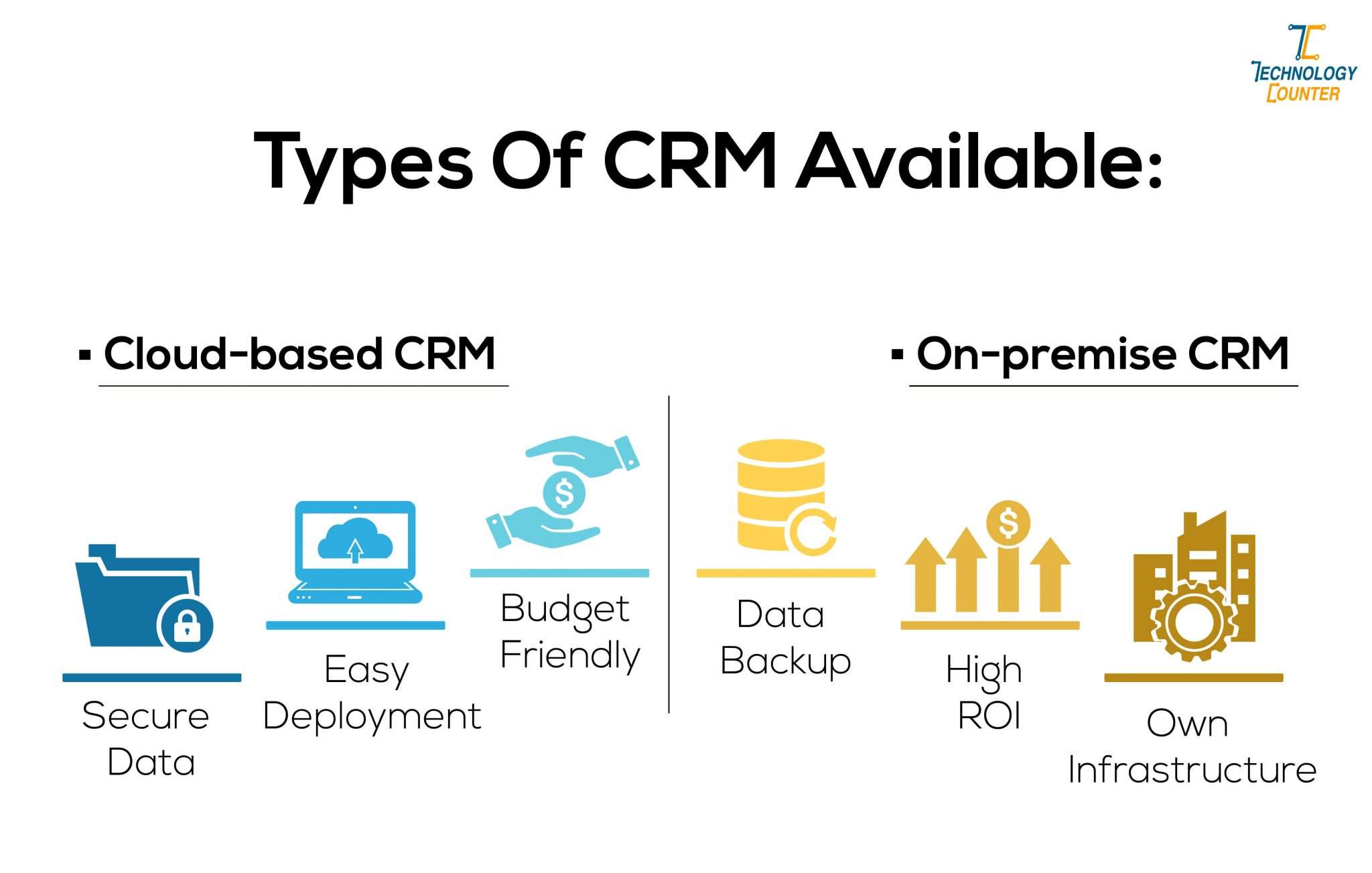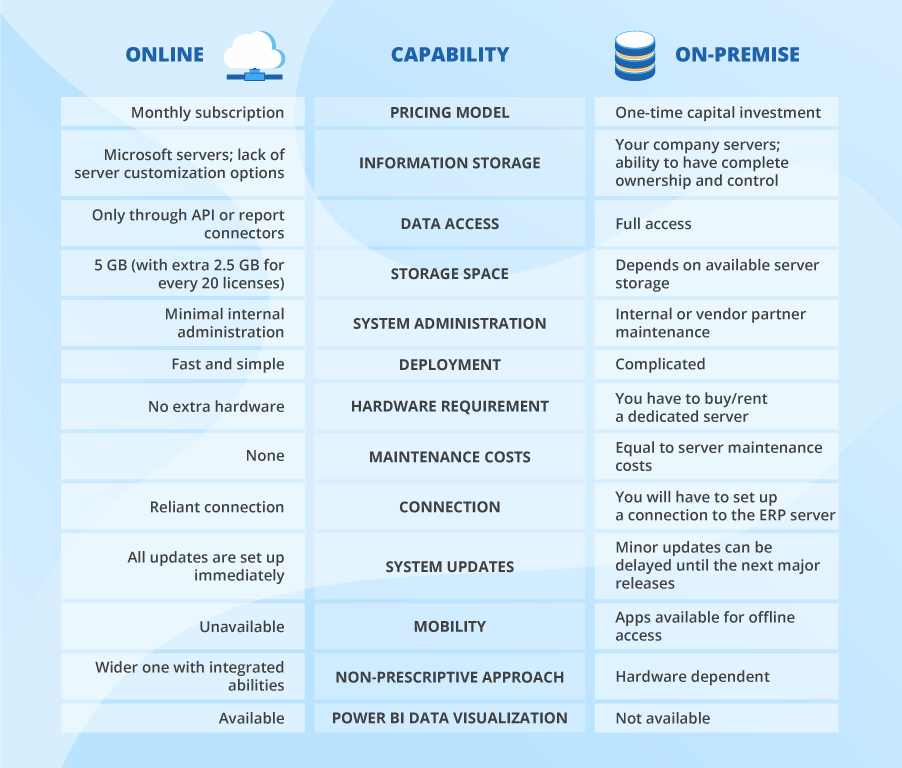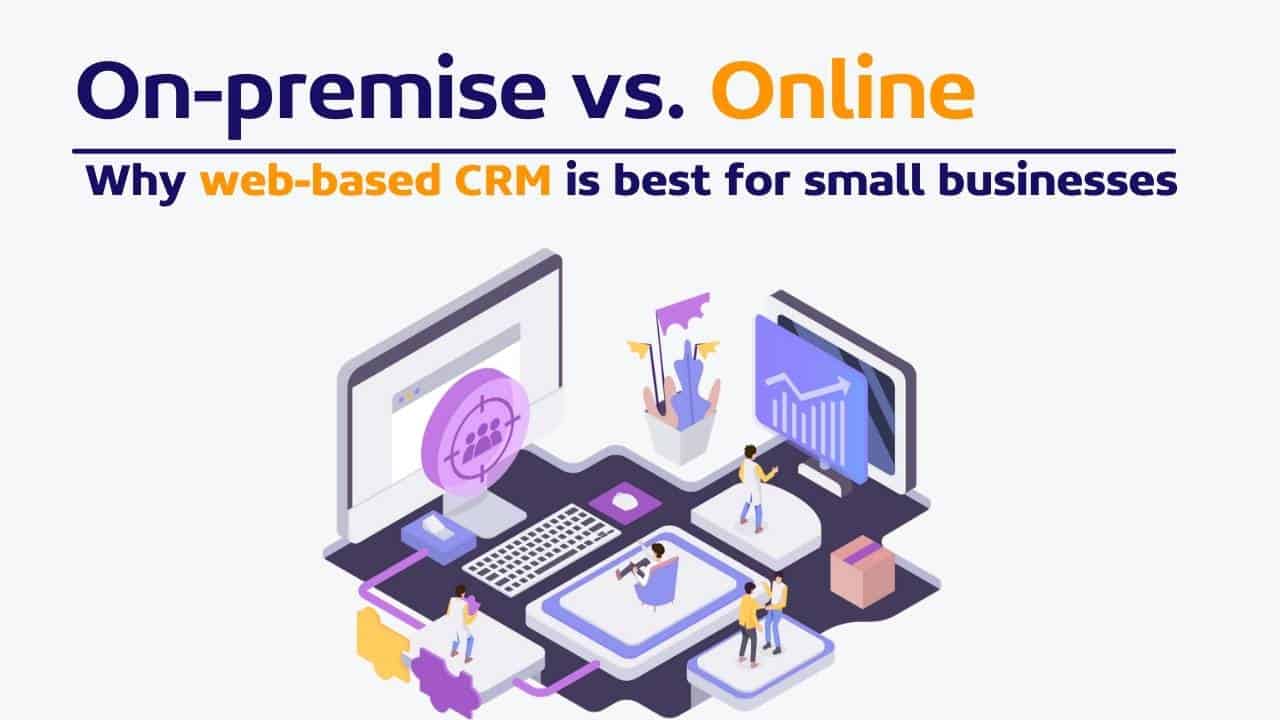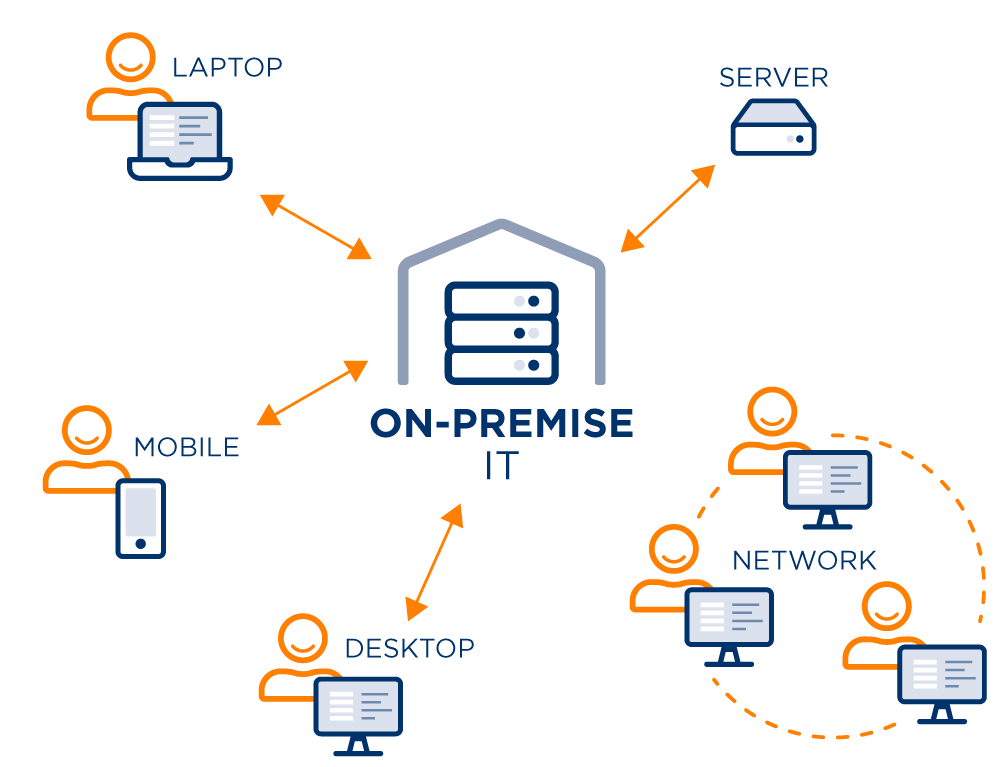Crm on premise – In today’s competitive business landscape, Customer Relationship Management (CRM) systems have become indispensable tools for managing customer interactions and fostering growth. Among the various CRM deployment options, on-premise CRM stands out for its unique advantages and considerations. This comprehensive guide delves into the world of CRM on-premise, exploring its benefits, challenges, features, and implementation strategies.
From understanding the key players in the on-premise CRM market to identifying the factors to consider when choosing the right solution, this guide provides valuable insights for businesses seeking to optimize their customer relationships through an on-premise CRM system.
On-Premise CRM Market Overview
The on-premise CRM market is a rapidly growing market, driven by the need for businesses to manage customer relationships more effectively. The market is dominated by a few key players, including Salesforce, Oracle, and Microsoft. These companies offer a variety of CRM solutions that can be customized to meet the specific needs of businesses.
The on-premise CRM market is expected to continue to grow in the coming years. This growth is being driven by the increasing adoption of cloud-based CRM solutions, which offer a number of advantages over on-premise solutions. These advantages include lower costs, increased flexibility, and improved scalability.
Key Players and Market Share
The key players in the on-premise CRM market are Salesforce, Oracle, and Microsoft. These companies hold a majority of the market share, with Salesforce being the market leader. Salesforce has a market share of over 50%, followed by Oracle with a market share of around 20%, and Microsoft with a market share of around 15%.
Market Trends and Growth Drivers
The on-premise CRM market is being driven by a number of trends, including the increasing adoption of cloud-based CRM solutions, the growing need for businesses to manage customer relationships more effectively, and the increasing availability of affordable CRM solutions.
Cloud-based CRM solutions are becoming increasingly popular because they offer a number of advantages over on-premise solutions. These advantages include lower costs, increased flexibility, and improved scalability. Cloud-based CRM solutions are also easier to deploy and maintain than on-premise solutions.
Businesses are also increasingly recognizing the need to manage customer relationships more effectively. CRM solutions can help businesses to track customer interactions, manage customer data, and automate marketing and sales processes. This can help businesses to improve customer satisfaction, increase sales, and reduce costs.
The increasing availability of affordable CRM solutions is also driving the growth of the on-premise CRM market. CRM solutions are now available at a variety of price points, making them affordable for businesses of all sizes.
Benefits of On-Premise CRM
On-premise CRM offers a number of benefits over cloud-based CRM, including:
- Greater control over data:With on-premise CRM, businesses have complete control over their data, including where it is stored and how it is accessed. This can be important for businesses that need to comply with strict data security regulations.
- Increased security:On-premise CRM systems are typically more secure than cloud-based CRM systems because they are not accessible over the internet. This can be important for businesses that handle sensitive data.
- Greater flexibility:On-premise CRM systems can be customized to meet the specific needs of a business. This can be important for businesses that have unique requirements.
- Lower cost:On-premise CRM systems can be less expensive than cloud-based CRM systems over the long term, as businesses do not have to pay ongoing subscription fees.
Examples of Businesses that have Successfully Implemented On-Premise CRM
- Salesforce:Salesforce is one of the leading providers of on-premise CRM software. Its customers include Coca-Cola, Toyota, and Amazon.
- Microsoft Dynamics CRM:Microsoft Dynamics CRM is another popular on-premise CRM software. Its customers include Ford, Dell, and HP.
- SAP CRM:SAP CRM is a leading on-premise CRM software for large enterprises. Its customers include Unilever, Adidas, and BMW.
Challenges of On-Premise CRM

While on-premise CRM offers several advantages, it also comes with its own set of challenges. These include high upfront costs, ongoing maintenance expenses, and the need for specialized IT expertise.
The total cost of ownership (TCO) for on-premise CRM can be significant, especially for large organizations. This includes not only the cost of the software itself but also the cost of hardware, infrastructure, and IT support. Additionally, on-premise CRM systems require regular maintenance and updates, which can add to the ongoing costs.
Examples of Challenges Faced by Businesses
- A large retail company implemented an on-premise CRM system but faced challenges with data integration and scalability. The system was unable to handle the large volume of data generated by the company’s multiple stores and online channels.
- A manufacturing company invested in an on-premise CRM system but found it difficult to customize the system to meet its specific needs. The company had to rely on the vendor for customization, which was expensive and time-consuming.
- A healthcare organization implemented an on-premise CRM system but faced security concerns. The system was vulnerable to cyberattacks, and the organization had to invest heavily in security measures to protect patient data.
Features of On-Premise CRM

On-premise CRM solutions offer a comprehensive suite of features designed to meet the specific needs of businesses. These features include:
Data Security and Control
On-premise CRM systems provide businesses with complete control over their data, ensuring that it remains secure and confidential. Businesses can customize security settings, manage user access, and implement encryption measures to protect their sensitive information.
Customization and Flexibility
On-premise CRM solutions are highly customizable, allowing businesses to tailor the system to their unique requirements. Businesses can modify workflows, create custom fields, and integrate with other business applications to create a CRM system that seamlessly aligns with their operations.
Scalability and Performance
On-premise CRM systems are designed to handle large volumes of data and support a growing number of users. Businesses can scale their CRM system as needed, ensuring that it can accommodate their expanding operations without compromising performance.
Integration with Existing Systems
On-premise CRM systems can be easily integrated with other business applications, such as ERP, accounting, and marketing automation systems. This integration enables businesses to streamline their operations, eliminate data silos, and improve overall efficiency.
Examples of On-Premise CRM Solutions
Some popular on-premise CRM solutions include:
- Microsoft Dynamics 365
- Salesforce
- Oracle Siebel CRM
- SAP Hybris
- SugarCRM
Considerations for Choosing On-Premise CRM
Choosing the right on-premise CRM system for your business requires careful consideration. Several factors influence the selection process, and it’s crucial to evaluate each aspect thoroughly.
Key Considerations
- Business Needs:Determine the specific CRM requirements of your business. Consider your industry, processes, and customer touchpoints.
- Budget:Establish a realistic budget for the CRM system, including software licensing, hardware, implementation, and maintenance costs.
- Technical Infrastructure:Assess your existing IT infrastructure to ensure it can support the on-premise CRM system. Consider factors like server capacity, network bandwidth, and security measures.
- Security:Data security is paramount. Evaluate the CRM system’s security features, including encryption, access controls, and disaster recovery plans.
- Scalability:Consider the future growth potential of your business. Choose a CRM system that can scale with your expanding needs without compromising performance.
Tips for Evaluation
- Conduct thorough research on available CRM solutions.
- Request demos and free trials to experience the functionality firsthand.
- Consult with industry experts and peers for recommendations.
- Create a checklist of essential features and evaluate each system against it.
- Consider the long-term costs of ownership, including maintenance, upgrades, and support.
Implementation of On-Premise CRM

Implementing an on-premise CRM involves several crucial steps that businesses must navigate carefully. These steps include:
- Assessment and Planning:Define business goals, assess current processes, and establish a roadmap for implementation.
- Software Selection:Evaluate and select an on-premise CRM solution that aligns with specific business requirements.
- Data Migration:Transfer existing customer data from legacy systems to the new CRM.
- Configuration and Customization:Tailor the CRM to meet specific business needs by configuring settings and customizing features.
- Training and Adoption:Provide comprehensive training to users and ensure widespread adoption of the new CRM.
- Integration:Connect the CRM with other business systems, such as ERP, marketing automation, and customer support tools.
- Testing and Go-Live:Thoroughly test the CRM system and prepare for a successful go-live.
- Maintenance and Support:Establish a plan for ongoing maintenance, updates, and technical support to ensure optimal performance.
Challenges during Implementation
Businesses may encounter various challenges during on-premise CRM implementation, including:
- Data Migration:Ensuring accurate and complete data transfer from legacy systems can be complex and time-consuming.
- Customization and Configuration:Tailoring the CRM to meet specific business needs requires technical expertise and can be a lengthy process.
- User Adoption:Overcoming resistance to change and ensuring widespread adoption among users can be a challenge.
- Integration:Integrating the CRM with other business systems can be complex and may require custom development.
- Budget and Resources:On-premise CRM implementation can be expensive and requires significant investment in hardware, software, and personnel.
Best Practices for Successful Implementation
To ensure a successful on-premise CRM implementation, businesses should adhere to best practices, such as:
- Executive Sponsorship:Obtain strong support and commitment from senior management to ensure project success.
- Clear Communication:Establish open and frequent communication channels to keep stakeholders informed and address concerns.
- Phased Approach:Implement the CRM in phases to minimize disruption and allow for gradual user adoption.
- User Involvement:Engage users throughout the implementation process to gather feedback and ensure their needs are met.
- Vendor Support:Leverage the expertise of the CRM vendor for guidance, technical support, and best practices.
Integration of On-Premise CRM: Crm On Premise

Integrating on-premise CRM with other business systems is crucial for seamless data flow and enhanced operational efficiency. By connecting CRM with systems like ERP, marketing automation, and e-commerce platforms, businesses can gain a holistic view of customer interactions and automate processes across departments.
Benefits of Integration
- Improved data accuracy and consistency:Integration ensures that customer data is synchronized across systems, eliminating data silos and reducing errors.
- Enhanced customer experience:A unified view of customer data allows businesses to provide personalized experiences, track interactions, and resolve issues efficiently.
- Increased productivity:Automated workflows and data sharing streamline processes, freeing up time for employees to focus on value-added activities.
- Better decision-making:Integrated data provides a comprehensive view of customer behavior, enabling informed decision-making and improved business outcomes.
Examples of Successful Integrations
- Salesforce + NetSuite:Integration between Salesforce CRM and NetSuite ERP provides a complete view of customer interactions, order history, and inventory levels, enabling better sales forecasting and inventory management.
- Microsoft Dynamics 365 + Marketo:Integration between Microsoft Dynamics 365 CRM and Marketo marketing automation platform allows for automated lead nurturing, personalized email campaigns, and improved sales conversion rates.
- SugarCRM + WooCommerce:Integration between SugarCRM CRM and WooCommerce e-commerce platform enables seamless order management, customer tracking, and automated order fulfillment.
Case Studies of On-Premise CRM
To illustrate the practical benefits of on-premise CRM, let’s explore case studies of businesses that have successfully implemented it.
These case studies showcase the challenges faced, the solutions implemented, and the tangible benefits achieved by organizations across various industries.
Manufacturing: Improved Efficiency and Reduced Costs
- Challenge:A manufacturing company struggled to manage customer relationships and sales processes effectively, leading to lost opportunities and inefficiencies.
- Solution:Implemented an on-premise CRM system to centralize customer data, automate workflows, and streamline communication.
- Benefits:Reduced operational costs by 15%, increased sales conversion rates by 10%, and improved customer satisfaction by 20%.
Healthcare: Enhanced Patient Care and Collaboration
- Challenge:A hospital faced challenges in coordinating patient care, accessing patient records, and communicating effectively with staff.
- Solution:Deployed an on-premise CRM system to integrate patient data, facilitate collaboration, and improve communication.
- Benefits:Reduced patient wait times by 25%, improved patient outcomes by 10%, and enhanced staff collaboration by 15%.
Retail: Personalized Customer Experiences and Increased Revenue, Crm on premise
- Challenge:A retail chain aimed to enhance customer experiences and drive sales through personalized interactions.
- Solution:Implemented an on-premise CRM system to capture customer preferences, track purchase history, and provide tailored recommendations.
- Benefits:Increased average order value by 12%, improved customer loyalty by 15%, and reduced customer churn by 10%.
Closure
In conclusion, CRM on-premise offers a robust and customizable solution for businesses seeking complete control over their customer data and infrastructure. While it comes with certain challenges and costs, the benefits of enhanced security, data ownership, and tailored functionality often outweigh these considerations.
By carefully evaluating their needs and following best practices for implementation and integration, businesses can leverage CRM on-premise to achieve their customer-centric goals and drive growth.
FAQ Explained
What is the primary advantage of CRM on-premise?
On-premise CRM provides businesses with complete control over their customer data and infrastructure, ensuring enhanced security and data ownership.
What are the key considerations when choosing an on-premise CRM solution?
Businesses should consider factors such as the size and complexity of their organization, their industry-specific requirements, budget constraints, and IT resources.
What are some common challenges associated with CRM on-premise?
On-premise CRM requires significant upfront investment in hardware, software, and IT infrastructure, and ongoing maintenance and support costs.
